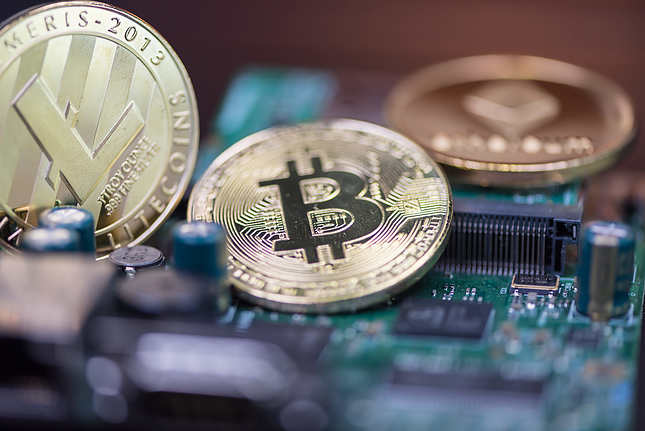The 2020 bull run in the cryptocurrency space is almost unrecognizable from three years ago. When bitcoin reached its previous all-time-high just shy of $20,000, the frenzied buying was 100% driven by FOMOing retail traders. Traditional banks like JPMorgan were still calling bitcoin a scam. Regulators were concerned by the rampant number of rogue projects and investors losing money, and no derivatives market was in place.
Institutional investors were not falling asleep at the wheel as this alternative asset class attempted to take off. But they simply weren't ready or able to take part. The infrastructure wasn't in place for larger participants with regulatory compliance burdens. It was inevitable that the rally would come to an and, as we rode it all the way down to its lowest point in December 2018, many weak hands and immature investors were shaken out of the space.
Yet, during the bear market that ensued, there was so much more going on in the crypto space that was far more important than the price. The industry began laying the foundations for growth and for institutions to take part and drive the next rally.
Development continued at breakneck speed, regulation provided greater clarity, products and interfaces became more sophisticated and user-friendly, scalability solutions were conceived and rolled out, and larger players gradually entered the market. What began as a modest start to crypto derivatives with the entrance of CBoE and CME bitcoin futures in December 2017 soon became a burgeoning market filled with competing players.
Institutions Are Driving This Run
BTC has reached a new all-time-high of almost $25,000 thanks to the continued work of core developers and innovative firms in the crypto space paving the way for massive endorsements from the likes of PayPal, Square, and MicroStrategy. Major traditional investors can no longer ignore the steller gains of BTC, ETH, and other cryptocurrencies – especially against the backdrop of a flailing global economy.
Cryptocurrency (and particularly BTC)'s stamp of approval by these massive players, its resilience in the face of the pandemic, decouplement from the stock market, and built-in scarcity are all attracting new entrants in droves. One of the key institutional players validating bitcoin's legitimacy as a reserve asset is Guggenheim Investments. According to their recent thesis, one BTC should be worth as much as $400,000 based on its scarcity and value relative to gold.
Now that institutions and traditional investors are fully comprehending the value of BTC, they're adjusting their positions accordingly. And it's time for the crypto space to rise to the challenge by offering institutional-grade products and solutions, and a diverse sophisticated derivatives market that allows them to conduct flexible trading and hedging strategies – just as they can in traditional financial markets.
Crypto Exchanges Must Rise to the Challenge
Now that the trend is clear, so, too, should be the response from the major exchanges in the crypto space that are largely accustomed to catering to retail traders. Beyond more user-friendly interfaces and sophisticated products, exchanges must be able to provide the infrastructure that institutions require. This includes elevated data protection policies, an elaborate and sophisticated derivatives offer with plenty of highly leveraged instruments beyond futures or perpetual swaps, the ability to cross-collateralize their positions and manage their portfolios – and risk – more effectively.
Exchange security, risk management systems, and institutional-grade custodial solutions are dramatically more robust since 2017. Today, we also have reliable crypto data aggregators and analysts, and are quick to respond to threats from bad or suspicious actors. Now, we need to raise the bar once again to offer institutional traders features such as unified account management (or Portfolio Margin) that allow them to manage all their accounts, trades, and crypto assets from within one single interface.
Having already gained significant traction in the traditional investment management industry, unified account management allows institutional investors to improve their risk management and gives them more flexibility over their trading strategies and capital. One example of this is that it substantially improves margin efficiency by unifying a trader's assets. This means that they can trade with any instrument and all of their purchasing power.
From an institutional perspective, this makes trading quicker and more efficient. If, say, a trader wants to enter an ETHUSD futures trade, they can do so without having to acquire ETH by simply using any of their crypto collateral. This is much more convenient and also removes the cost of buying ETH or other altcoins with USDT or BTC.
This is the type of innovative solution that will attract more institutional players (especially hedge funds, and accredited investors who want to optimize gains for their clients). And, while this is a feature very common among prime brokers and top-tier investment banks, so far, crypto exchanges have not yet picked up the gauntlet.
Where We Go from Here
Institutions are stepping up demand. And they're not stopping at Bitcoin. A quick glance at the latest data from Skew shows that ether futures are also surging in demand, with almost $25 billion in aggregated daily volumes in November 2020 alone. The move toward ETH 2.0, a scalable blockchain that will support major large scale applications, and the growth of DeFi, an emerging alternative borrowing and lending ecosystem offering participants high yield compared to traditional finance, are capturing investors' interest as well.
Massive institutional players like TDAmeritrade, and Arca Labs all pushing for sustainable development of the DeFi economy, and major lending platforms and protocols such as Compound, Aave, and Maker are all pushing forward to make the space safer and more efficient and robust.
This bull run is nothing like 2017 because the space is nothing like it was three years ago. Crypto is rising to the challenge to provide solutions to the problems that people are facing around the world – as well as the sophistication of products and trading tools that institutional investors require. The gap between traditional markets and crypto is closing and there's no telling how far this bull run will go.
This material should not be taken as the basis for making investment decisions, nor be construed as a recommendation to engage in investment transactions. Trading digital assets involves significant risk and can result in the loss of your invested capital. You should ensure that you fully understand the risk involved and take into consideration your level of experience, investment objectives and seek independent financial advice if necessary.
Recommended Content
Editors’ Picks

Polygon joins forces with WSPN to expand stablecoin adoption
WSPN, a stablecoin infrastructure company based in Singapore, has teamed up with Polygon Labs to make its stablecoin, WUSD, more useful in payment and decentralized finance.

Coinbase envisages listing of more meme coins amid regulatory optimism
Donald Trump's expected return to the White House creates excitement in the cryptocurrency sector, especially at Coinbase, the largest US-based crypto exchange. The platform is optimistic that the new administration will focus on regulatory clarity, which could lead to more token listings, including popular meme coins.

Cardano's ADA leaps to 2.5-year high of 90 cents as whale holdings exceed $12B
As Bitcoin (BTC) gets closer to the $100,000 mark for the first time — it crossed $99,000 earlier Friday — capital is rotating into alternative cryptocurrencies, creating a buzz in the broader crypto market.

Shiba Inu holders withdraw 1.67 trillion SHIB tokens from exchange
Shiba Inu trades slightly higher, around $0.000024, on Thursday after declining more than 5% the previous week. SHIB’s on-chain metrics project a bullish outlook as holders accumulate recent dips, and dormant wallets are on the move, all pointing to a recovery in the cards.

Bitcoin: Rally expected to continue as BTC nears $100K
Bitcoin (BTC) reached a new all-time high of $99,419, just inches away from the $100K milestone and has rallied over 9% so far this week. This bullish momentum was supported by the rising Bitcoin spot Exchange Traded Funds (ETF), which accounted for over $2.8 billion inflow until Thursday. BlackRock and Grayscale’s recent launch of the Bitcoin ETF options also fueled the rally this week.

Best Forex Brokers with Low Spreads
VERIFIED Low spreads are crucial for reducing trading costs. Explore top Forex brokers offering competitive spreads and high leverage. Compare options for EUR/USD, GBP/USD, USD/JPY, and Gold.